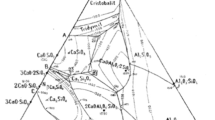Abstract
The new mathematical connection of De Donder’s differential entropy production with the differential changes of thermodynamic potentials (Helmholtz free energy, enthalpy, and Gibbs free energy) was obtained through the linear sequence of equations (direct, straightforward path), in which we use rigorous thermodynamic definitions of the partial molar thermodynamic properties. This new connection uses a global approach to the problem of reversibility and irreversibility, which is vital to global learners’ view and standardizes the linking procedure for thermodynamic potentials (Helmholtz free energy, enthalpy, and and Gibbs free energy)—preferably to the sensing learners. It is shown that De Donder’s differential entropy production in an isolated composite system is equal to the differential change in total entropy and that De Donder’s equation agrees with Clausius’ inequality. The useful work of the irreversible process is discussed, which with the decrease of irreversibility tends towards the hypothetical maximum useful work of the reversible process.
Graphical abstract






Similar content being viewed by others
Data availability
Not applicable.
Code availability
Not applicable.
Notes
The differential change of Helmholtz free energy is: \(dF=-SdT-pdV+\sum_{i=1}^{C}{\mu }_{i}d{n}_{i}\); while at \(V,T=const.\) is: \(dF=\sum_{i=1}^{C}{\mu }_{i}d{n}_{i}\).
Differential change of entropy in the primary system (which is a closed system to the environment, i.e., to the reservoir of the corresponding intensive parameter) is the sum of differential change of entropy due to irreversible process within the primary system (\(d{S}_{i}\)) and differential change of entropy due to energy and particle exchange with the environment (\(d{S}_{e}\)): \(dS= d{S}_{i}+d{S}_{e}\).
The reversible work source (RWS) is a system of the conservative force ($${F}_{CF}$$), then virtually the $${W}_{P,T}^{max}$$ work can be viewed as the energy that is transformed into the potential energy of conservative force ($${W}_{P,T}^{max}=\Delta {U}_{CF}$$). Therefore, the $${W}_{P,T}^{max}$$ work (energy from a thermodynamic process) is virtually stored in a reversible work source as potential energy:
$$\Delta {U}_{CF}={W}_{P,T}^{max}={\int }_{i}^{f}Fdr=-{\int }_{i}^{f}{F}_{CF}dr$$In real fuel cells \(\sum_{i=1}^{C}{{\nu }_{i}\mu }_{i}\) (6) is no longer constant, or in real galvanic cells where the electrochemical reaction progresses to an equilibrium state during the work potential decreases due to increased irreversibility—in equilibrium, the work potential of the galvanic cell is zero.
References
Alberty, R.A.: Use of legendre transforms in chemical thermodynamics. Pure Appl. Chem. 73, 1349–1380 (2001). https://doi.org/10.1351/pac200173081349
Atkins, P.W.: The Laws of Thermodynamics: A Very Short Introduction. Oxford University Press, Oxford (2010)
Atkins, P.W., de Paula, J.: Physical Chemistry for the Life Sciences, 2nd edn. Oxford University Press, Oxford (2010)
Callen, H.B.: Thermodynamics and Introduction to Thermostatistics, 2nd edn. John Wiley & Sons, Singapore (1985)
Daily, J.W.: Statistical thermodynamics an engineering approach. Cambridge University Press, Cambridge (2019)
Engel, T., Reid, P.: Thermodynamics, Statistical Thermodynamics, & Kinetics, 2nd edn. Pearson Education Inc., Upper Saddle River, New York (2010)
Felder, R.M., Silverman, L.K.: Learning and teaching styles. Engr. Educ. 78, 674–681 (1988)
Gómez-García, M.-Á., Dobrosz-Gómez, I., Rynkowski, J.: Learning on chemical equilibrium shift assessment for membrane reactors using Gibbs free energy minimization method. Educ. Chem. Eng. 22, 20–26 (2018). https://doi.org/10.1016/j.ece.2017.10.003
Hladky, P.W.: From bunsen burners to fuel cells: invoking energy transducers to exemplify “paths” and unify the energy-related concepts of thermochemistry and thermodynamics. J. Chem. Educ. 86, 582–586 (2009). https://doi.org/10.1021/ed086p582
Honti, B., Idrissi, A., Jedlovszky, P.: Calculation of the free energy of mixing as a tool for assessing and improving po-tential models: the case of the N N-Dimethylformamide-Water System. J. Phys. Chem. B 125, 4819–4830 (2021). https://doi.org/10.1021/acs.jpcb.1c01749
Keifer, D.: Enthalpy and the second law of thermodynamics. J. Chem. Educ. 96, 1407–1411 (2019). https://doi.org/10.1021/acs.jchemed.9b00326
Keszei, E.: Chemical Thermodynamics. An Introduction. Springer-Verlag, Berlin Heidelberg (2012)
Kondepudi, D., Prigogine, I.: Modern Thermodynamics. From Heat Engines to Dissipative Structures. John Wiley & Sons, Chichester (2002)
Litzinger, T.A., Lee, S.H., Wise, J.C., Felder, R.M.: A psychometric study of the index of learning styles©. J. Eng. Educ. 96, 309–319 (2007). https://doi.org/10.1002/j.2168-9830.2007.tb00941.x
Margenau, H., Murphy, G.M.: The Mathematics of Physics and Chemistry, 2nd edn. Affiliated East-West Press Private Ltd., New Delhi (1966)
Natal, J., Ávila, I., Tsukahara, V.B., Pinheiro, M., Maciel, C.D.: Entropy: from thermodynamics to information processing. Entropy 23, 1340 (2021). https://doi.org/10.3390/e23101340
Nelson, P.G.: Understanding entropy. Found. Chem. (2022). https://doi.org/10.1007/s10698-021-09412-9
Noll, R.J., Hughes, J.M.: Heat evolution and electrical work of batteries as a function of discharge rate: spontaneous and reversible processes and maximum work. J. Chem. Educ. 95, 852–857 (2018). https://doi.org/10.1021/acs.jchemed.7b00653
Pisano, R., Anakkar, A., Pellegrino, M.N., Nagels, M.: Thermodynamic foundations of physical chemistry: reversible processes and thermal equilibrium into the history. Found. Chem. 71, 297–323 (2019). https://doi.org/10.1007/s10698-018-09324-1
Raff, L.M.: Spontaneity and equilibrium: why “ΔG < 0 denotes a spontaneous process” and “ΔG = 0 means the system is at equilibrium” are incorrect. J. Chem. Educ. 91, 386–395 (2014a). https://doi.org/10.1021/ed400453s
Raff, L.M.: Spontaneity and equilibrium II: multireaction systems. J. Chem. Educ. 91, 839–847 (2014b). https://doi.org/10.1021/ed4008205
Roósz, B., Visy, C., Nagypál, I.: On the derivation of the Gibbs-Helmholtz equation. Chem. Texts 2, 1–3 (2016). https://doi.org/10.1007/s40828-016-0023-7
Sandler, S.I.: Chemical, Biochemical, and Engineering Thermodynamics, 4th edn. John Wiley & Sons, Asia (2006)
Teixeira-Dias, J.J.C.: Molecular physical chemistry, a computer-based approach using mathematica® and gaussian. Springer Nature, Cham (2017)
Winterbone, D.E.: Advanced Thermodynamics for Engineers. Butterworth-Heinemann, Oxford (1996)
Wright, S.E.: Comparison of the theoretical performance potential of fuel cells and heat engines. Renew. Energy 29, 179–195 (2004). https://doi.org/10.1016/S0960-1481(03)00191-5
Funding
No funds, grants, or other support was received.
Author information
Authors and Affiliations
Corresponding author
Ethics declarations
Conflict of interest
The author has no financial or non-financial interests.
Consent to participate
Not applicable.
Ethical approval
Not applicable.
Additional information
Publisher's Note
Springer Nature remains neutral with regard to jurisdictional claims in published maps and institutional affiliations.
Rights and permissions
Springer Nature or its licensor (e.g. a society or other partner) holds exclusive rights to this article under a publishing agreement with the author(s) or other rightsholder(s); author self-archiving of the accepted manuscript version of this article is solely governed by the terms of such publishing agreement and applicable law.
About this article
Cite this article
Poša, M. Connecting De Donder’s equation with the differential changes of thermodynamic potentials: understanding thermodynamic potentials. Found Chem (2024). https://doi.org/10.1007/s10698-024-09507-z
Accepted:
Published:
DOI: https://doi.org/10.1007/s10698-024-09507-z



